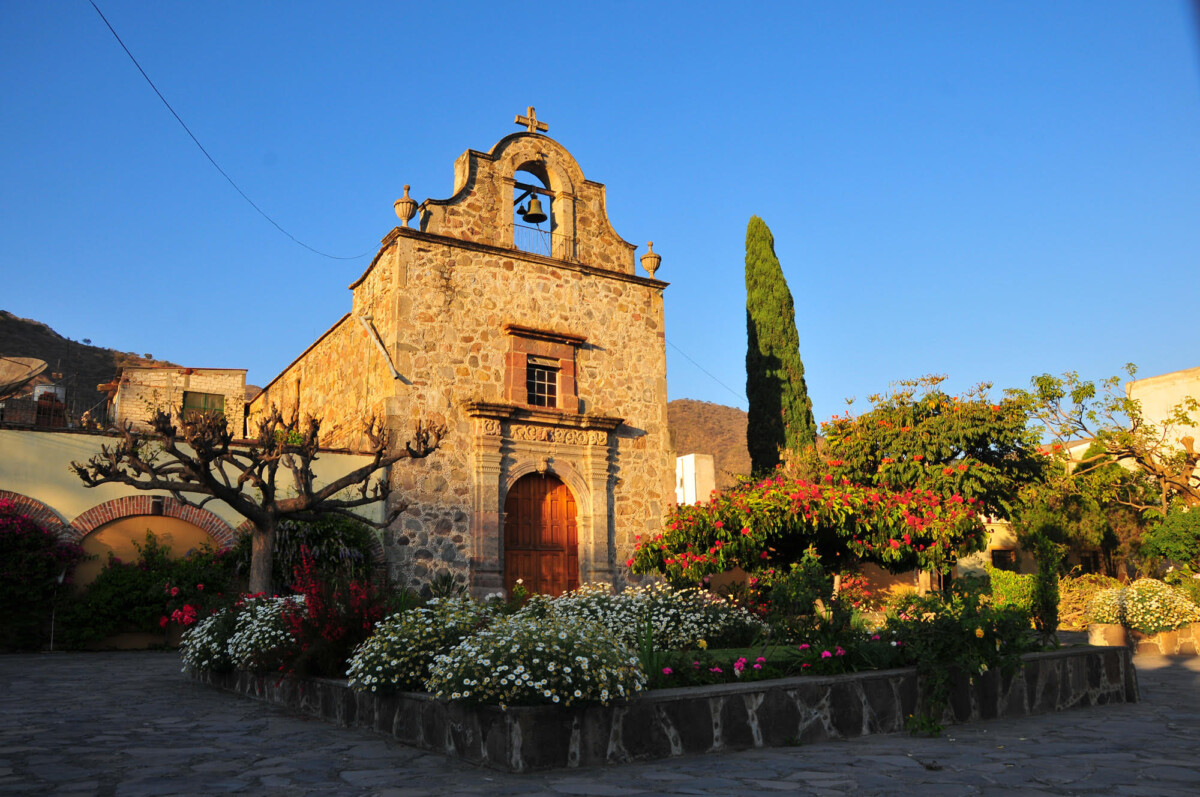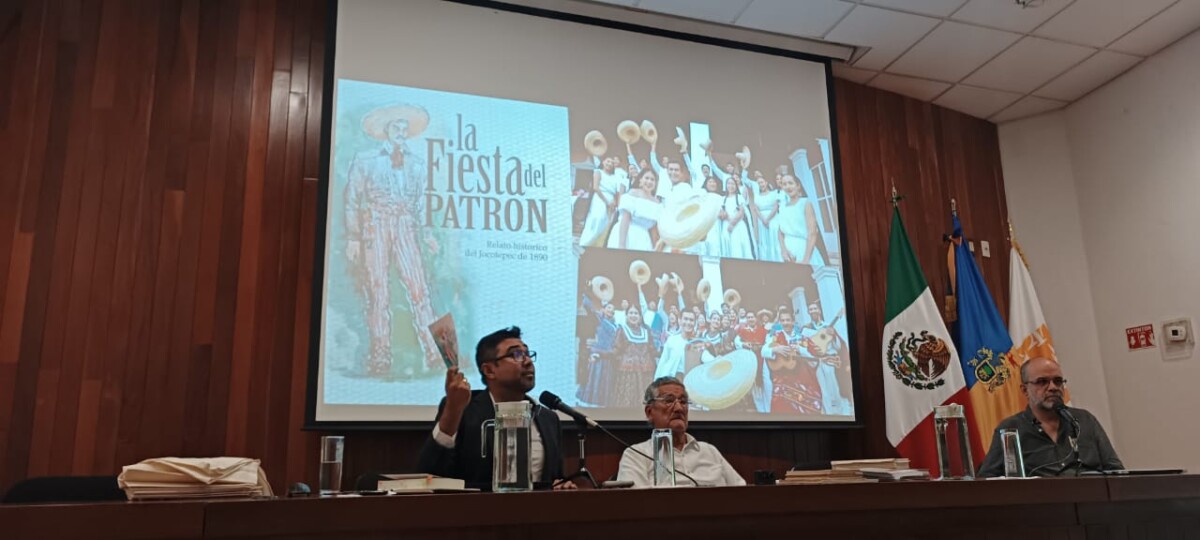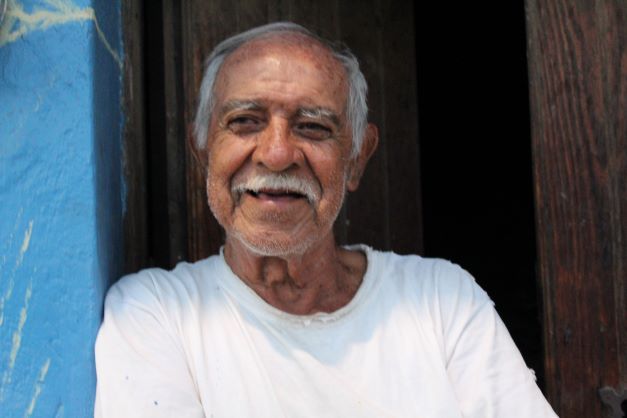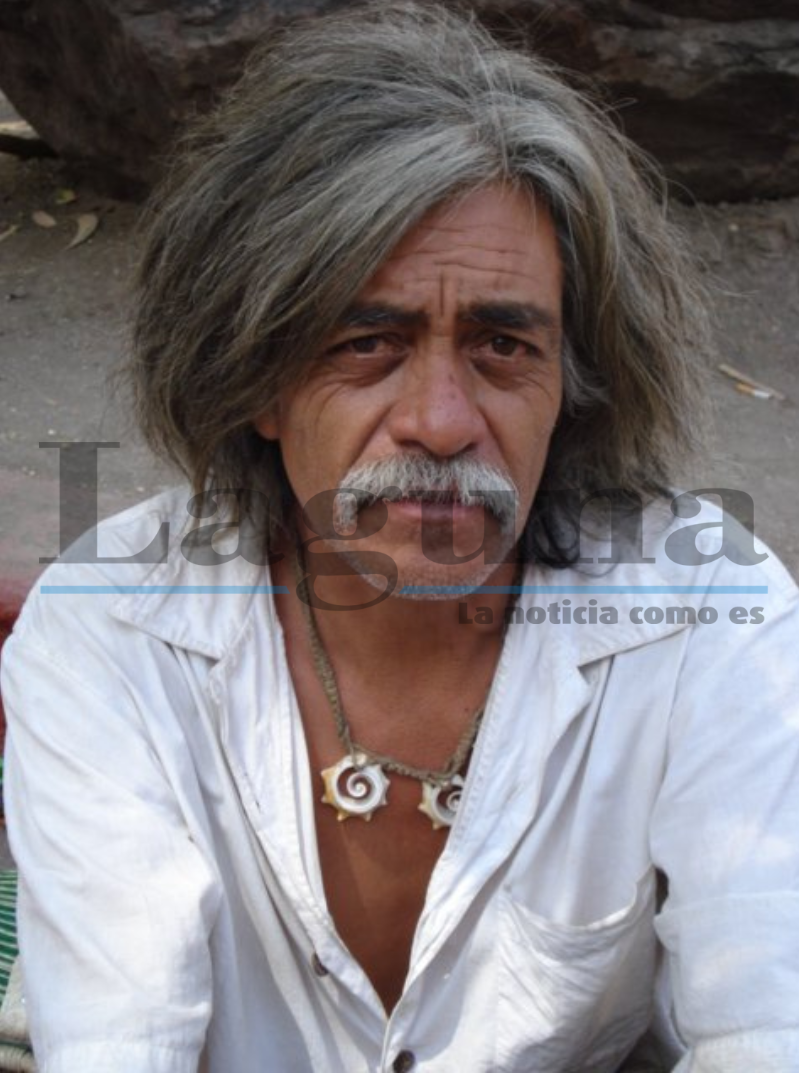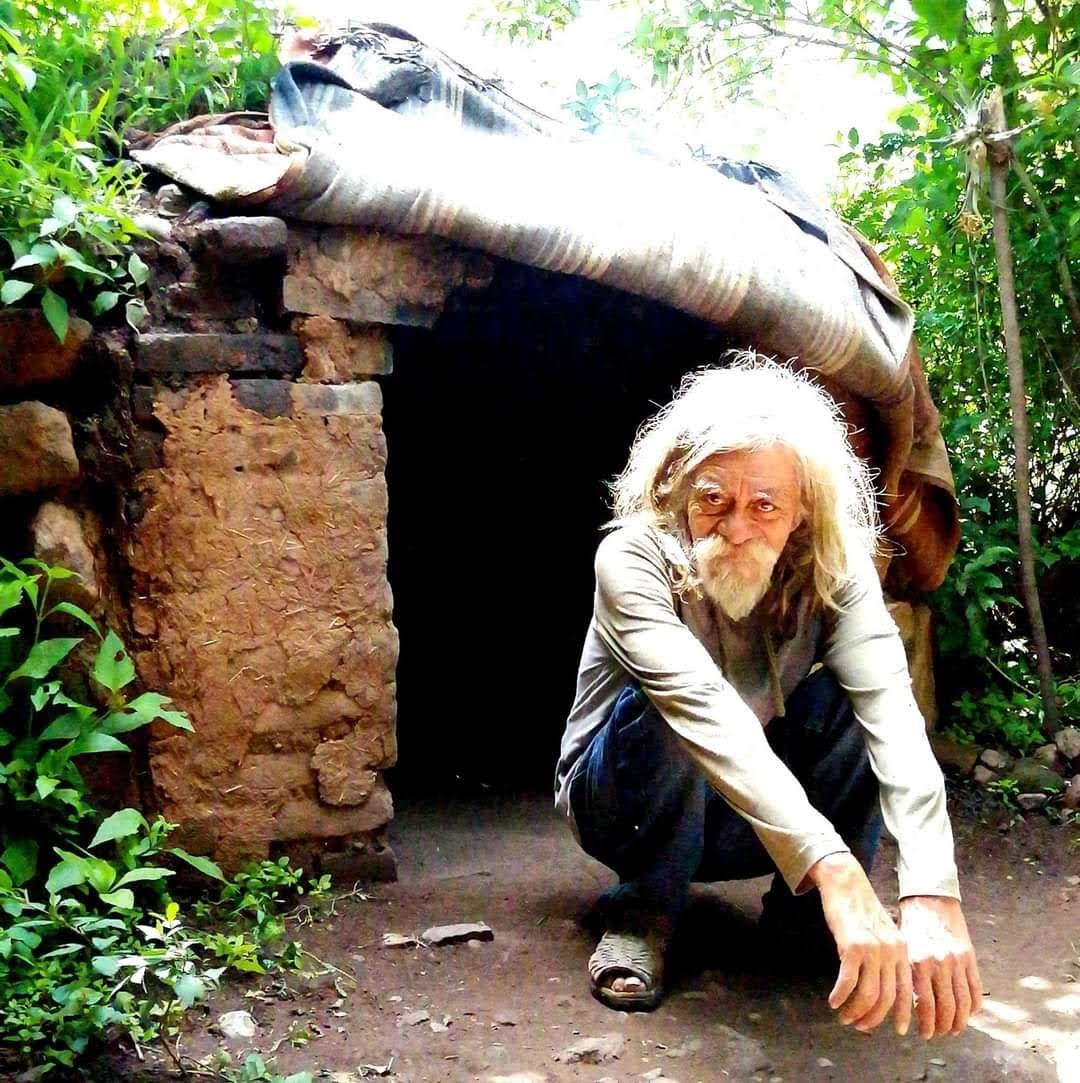historia
El origen de la Capilla del Rosario
Fachada de la capilla de la Virgen del Rosario. Foto: Laguna.
Jesús López Vega.- Los antecedentes de la Capilla del Rosario, de acuerdo a la gente mayor de Ajijic, se remontan al legendario lugar conocido por los oriundos de este pueblo como ‘‘Teopantitlan’’, este mismo lugar es mencionado en las crónicas franciscanas del fraile Antonio Tello, como Tomatlán y Tecolotlán, puntos geográficos ubicados actualmente entre los arroyos Zapota ‘‘Puerta Nueva’’ y Alseseca, al poniente de Ajijic. Tomatlán ubicado sobre el camino real ‘‘camino viejo’’ y Tecolotlán localizado, un poco más al norte, donde actualmente pasa la carretera, dividiendo sus ya convertidos escombros en dos partes.
Estos dos lugares, de acuerdo con las crónicas, mencionan que fray Martín de Jesús hizo dos capillas muy pequeñas de zacate, durante la evangelización de Axixic en el año de 1531.
‘‘La Iconografía Mariana menciona que Fr. Martín de Jesús para asegurar la conversión de los indígenas ribereños, aunque teniendo como centro el pueblo de Axixic. Hizo por sus propias manos, ayudado por los indios ya convertidos, otra capilla en Tomatlán, a Nuestra Señora de la Asunción y otra en San Antonio Tlayacapan’’.
En ese mismo año de 1531 se inició la construcción del primitivo convento ‘‘San Francisco de Axixic’’, que es actualmente el Templo de San Andrés, en colaboración con indígenas, bajo la tutela de fray Martín de Jesús. La primera capillita hecha en Tomatlán muy rudimentaria fue dedicada a la Asunción Gloriosa, con el propósito de seguir su misión apostólica, bautizando y diciendo misa a los indígenas de toda esta región ribereña del Lago de Chapala, sin embargo, duró muy poco en pie, porque un fuerte huracán la derribó. Este misionero hizo otra capilla un poco más arriba, en el puesto llamado Tecolotlán, donde se administraban los santos sacramentos, hasta que se terminó el referido primitivo convento ‘‘San Francisco de Axixic’’, en el año de 1539.
Estas dos capillitas hechas en el lugar de la Alseseca, serían los antecedentes de la capilla del Rosario, tradicionalmente se le conoce como ‘‘La Capilla del Hospitalito’’ y antiguamente conocida como ‘‘Capilla del Hospital de la Limpia Concepción de Nuestra Señora’’ que a través de los siglos XVI, XVII, XVIII perduró en Ajijic durante la administración de la Doctrina de los frailes de San Francisco, su posición fue la invariable de todos los Hospitales de La Concepción. Fray A. Tello habló en su crónica de la existencia del Hospital de la Concepción en este pueblo, pues refiriéndose al año de 1544 expresamente asienta que ‘‘en dicho tiempo… en el pueblo de AXIXIC fundaron los religiosos el Hospital”. Su fundación se debió para socorrer a los indígenas en las diferentes pestes que los azotaron. De estas se tienen noticias que en el año siguiente, en 1545 apareció una epidemia general de la que ‘‘de seis partes de indígenas murieron cinco’’ y dicha peste fue ‘‘un pujamiento de sangre y calenturas’’. Era tanta la sangre que les salía por las narices, que estas se le reventaban’’. Otra en 1575, otras más posteriores en el mismo siglo XVI.
Por estos datos bien se ve de cuánta eficacia fue la fundación del Hospital de la Concepción para los naturales del pueblo de Ajijic. Se construyó también en este hospital la respectiva Capilla de la Concepción que ahora aquí nos ocupa, para administrar en ella a los enfermos los sacramentos, y a la vez se funda en la Capilla la ‘‘Cofradía de la Limpia Concepción de Nuestra Señora’’, para que sus miembros atendieran tanto al culto de la Virgen de la Concepción en dicha capilla, como a los enfermos, entrando por determinado tiempo, y por barrios al servicio del Hospital. (Por esta información se deduce que tanto el Hospital, la Capilla y la Cofradía se iniciaron en el año referido de 1544). Dice un antiguo escrito anexo a ‘‘El origen de la Capilla del Rosario de Ajijic Jalisco’’ por Ernesto Ramos Meza: ‘‘la Cofradía era una asociación que se dedicaba a juntar limosna y rendirle culto a la Virgen y a cuidarla y parte de las cosechas de la Cofradía era destinada para su sustento, bajo la dirección de los frailes”.
Existe una bella escritura, se podría decir un tanto romántica, ligada a las crónicas franciscanas llamada ‘‘ORÍGENES’’ (entrelazada con un estudio Indigenista por la Comunidad Indígena de Axixic) esta leyenda habla sobre los orígenes del pueblo de Ajijic de tiempos prehispánicos y da una fecha de 1472, poco antes de la llegada de los españoles, menciona personajes indígenas como protagonistas de antes y durante la conquista y evangelización de este poblado. Menciona la descendencia de la princesa Xochitlpilli.
Dice que la primera de sus hijas de nombre Cihualpilli, dominó el territorio de Tonallan (Tonalá), la segunda de nombre Coyotzin, dominó el territorio de Tlajomulco y la tercera de nombre Xicantzin, (la viejita Zincatzia como la conocen los oriundos de Ajijic) se encargó de reinar Axixic. Al llegar los españoles, conocen el lugar donde se bañaba la princesa, como el ‘‘Ojo de agua de la Reina Xochitl’’, ubicado al pie del cerro. Y Xitomatl, el hijo, gobernó el territorio de Cutzalan.
Se menciona también que cuando llegaron los españoles, junto con los misioneros franciscanos, la Xincatzin y sus seguidores se transportaron a la piedra china, entre ellos los danzantes ‘‘sayacos’’, para darles la bienvenida. En las crónicas franciscanas menciona la llegada de Alonso de Avalos, en el año de 1522 y que tal conquista en estos pueblos ribereños fue pacífica, sin derramamiento de sangre. (Esta piedra china grande de tezontle rojizo, se encontraba en la mojonera divisoria entre San Juan Cosalá y Ajijic, y parte de este tezontle se utilizó para la construcción de las cúpulas del actual templo de San Juan Cosalá, mencionó el Sr. D. Guadalupe Hernández Comparan (QDEP.)
Dice la crónica franciscana que Xitomatl se fue a vivir a Axixic con sus familiares y principales durante la construcción del convento San Francisco de Axixic en 1531.
CONTINUARÁ…
Participa jocotepense en Coloquio Internacional de Mariachi
Carlos Alberto Cuevas Ibarra, durante su participación en el coloquio. Foto: Cortesía.
Armando Esquivel.- El jocotepense Carlos Alberto Cuevas Ibarra, fue parte del Coloquio Internacional del Mariachi, realizado en Zapopan el 5 de octubre, participando con una ponencia referente a la historia de la música de Jocotepec.
El coloquio se realizó en las instalaciones del Colegio de Jalisco del 4 al 6 de octubre, como parte del XXII Encuentro Nacional del Mariachi Tradicional, donde el jocotepense presentó su investigación respecto a la que se debe considerar la música tradicional de la localidad.
“Hay una facción de una investigación de Jocotepec que dice que lo tradicional de Jocotepec es la tambora ranchera, o sea, el mariachi con tambora, cosa que nosotros desconocemos totalmente esta investigación como lo tradicional de Jocotepec y como algo representativo de Jocotepec”, señaló Carlos Cuevas, asegurando que no hay un sólo registro que dé credibilidad a la idea de la tambora ranchera. “Ni preguntando al mariachero más viejo de Jocotepec, que tiene ahorita 93 años”.
Carlos mencionó que el mariachi con tambora fue más común en la zona de los Altos de Jalisco, ante su cercanía con Zacatecas, mientras que en las zonas del sur colindantes con Michoacán y en la zona de la sierra de Mazamitla, se marcaba el uso del arpa en el mariachi.
“En la zona de Jocotepec, porque estamos muy pegados a Guadalajara y principalmente la zona de Cocula, Sayula y toda esta zona, nosotros la musicalización del mariachi es un mariachi tradicional basado en la guitarra, el guitarrón, la vihuela y el violín y la confluencia de estos mismos, más no hay tambora y dentro de mis investigaciones, las personas más viejas dicen «Sí, yo recuerdo como en sueños haber visto mariachis con arpa» entonces sí entra un poquito el mariachi con arpa, pero nuestra musicalización es más pegadito a Cocula”, mencionó el entrevistado.
También hizo mención a una fotografía, la más antigua de un mariachi retratado en la zona de Jocotepec, en 1912, con los instrumentos mencionados, pero con el detalle de contar con una flauta.
Para la investigación, Cuevas Ibarra dice haberse documentado con escritos y pláticas con mariachis y familiares de los que ya no están en vida. “Presentamos absolutamente todo lo que tenemos de antecedentes, desde antecedentes musicales, de dónde sacamos, por qué, hemos platicado con más de 40, 50 personas sobre el tema, de los cuales tenemos las entrevistas bien documentadas, alrededor de 20, 25 personas que tienen una fecha de nacimiento desde 1912, 1913, hasta 1945, 1947, que son los más jovencitos que tenemos”, contó Cuevas Ibarra.
Carlos adelantó que está en planes una publicación con toda la investigación respecto a la historia musical de Jocotepec, misma que espera esté lista para inicios del siguiente año.
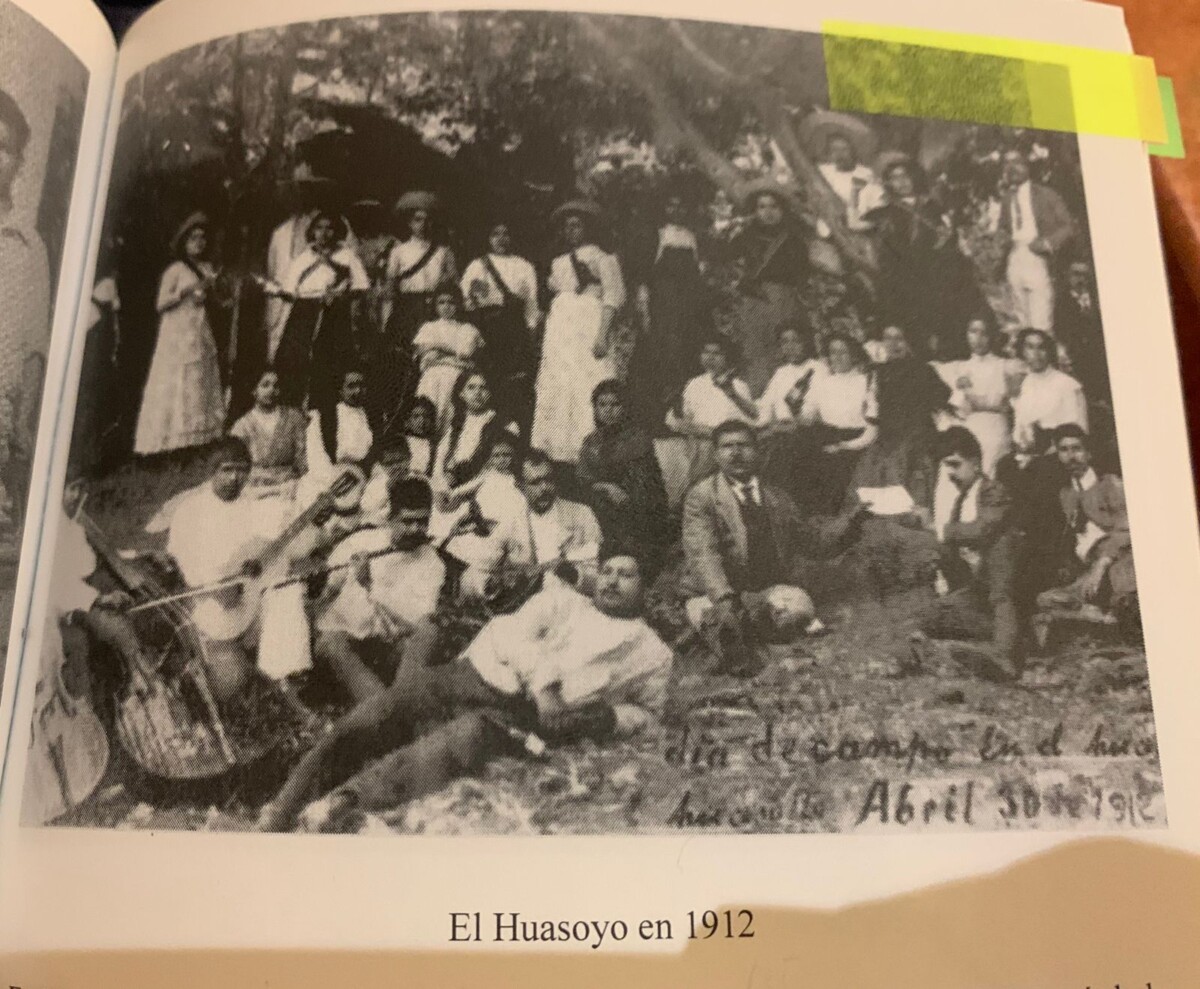
Primera fotografía de una agrupación músical en Jocotepec. Foto: Cortesía.
Estalla el conflicto entre Israel y Gaza, hay tres mexicanos desaparecidos
Bombardeo de Israel a la ciudad de Gaza. Foto: Reuters.
Redacción.- Luego del ataque desde Gaza el sábado 7 de octubre, el primer ministro de Israel, Benjamín Netanyahu, declaró el estado de guerra; se reportó a tres mexicanos desaparecidos por el conflicto.
Los ataques fueron atribuidos al grupo militar palestino Hamás, quien informó que desde el primer ataque han lanzado más de 2 mil 200 cohetes y secuestrado a soldados israelíes.
Hasta el 9 de octubre, es decir, dos días después del primer ataque, el número de víctimas mortales supera las mil 300 personas. Israel ha informado que 800 ciudadanos han muerto desde el sábado, mientras Gaza cifra sus fallecidos en más de 510; mientras que los heridos de ambos bandos ascienden a 5 mil, según información publicada por CCN.
Tras el ataque del 7 de octubre del grupo palestino Hamás, tres mexicanos fueron reportados como desaparecidos, confirmó este lunes 9 el presidente de México, Andrés Manuel López Obrador, durante su conferencia mañanera.
Por tal motivo, se enviarán dos aviones militares con destino a Israel para tratar de rescatar a los ciudadanos mexicanos atrapados. Uno salió a las 10:00 horas y otro despegará esta tarde.
“Hoy sale un avión para traer a los que quieran venir a México, están trabajando los embajadores en Israel y Palestina. Hay apuntados alrededor de 300 mexicanos que quieren salir, la mayoría están en Israel. Se está buscando la protección de todos nuestros connacionales”, dijo desde Palacio Nacional.
Presentan cerveza conmemorativa por los 200 años de Jalisco
Latas conmemorativas por la celebración de los 200 años de Jalisco. Foto: Gobierno de Jalisco.
Redacción.- En el marco de las celebraciones de los 200 años de Jalisco, el Gobierno estatal, en coordinación con el Grupo Modelo, presentaron el 9 de junio la cerveza Estrella de Jalisco, conmemorativa por los festejos del bicentenario.
Las latas conmemorativas constan de cuatro diseños emblemáticos representantes de la identidad de Jalisco en el mundo: el Mariachi, la Minerva, la Charrería y el Agave.
‘’Es un momento para brindar en el estado porque estamos celebrando los 200 años de Jalisco y de verdad nos sumamos a esta celebración me refiero a nuestra cerveza, Estrella. Nos sumamos a esta fiesta con la producción de algo especial, son cuatro latas conmemorativas coleccionables que tienen la identidad visual que fuimos trabajando en equipo y que darán un gran salto a esta celebración y que sin duda están a la altura de estos 200 años y de este gran Estado que es Jalisco’’, destacó Jesús Adrián Cedillo, Gerente Regional de Ventas de grupo Modelo.
Por su parte, Raúl Escalante, Vicepresidente Legal y de Asuntos Corporativos de Grupo Modelo señaló que Grupo Modelo está por cumplir casi 100 años desde su fundación.
“Hoy somos orgullosos miembros de la cervecera más grande del mundo. ¿Qué es lo que más nos llena de orgullo de esto? Entre otras cosas, que nos ha permitido llevar el talento mexicano en formato líquido a más de 150 países. Ese talento, como el de los jaliscienses que están detrás de nuestra emblemática Cerveza Estrella de Jalisco, que hoy deleita a millones de personas más allá de nuestras fronteras’’.
Imagen de la virgen de Guadalupe de Ajijic, una reliquia en el abandono
Virgen de Guadalupe de la parroquia de San Andrés Apóstol. Foto: Sofía Medeles.
Sofía Medeles.- Una de las imágenes que se encuentra dentro de la parroquia de San Andrés Apóstol, pese a tener un peso histórico, hoy en día se encuentra deteriorada. Se trata de la imagen de la Virgen de Guadalupe, que se encuentra a un costado del altar principal.
Según datos, se trata de una pintura al óleo y, aunque no se cuenta con datos del autor, esta provendría del siglo XVIII, que comprende desde el año 1700 al 1799. El daño se encuentra en la capa pictórica, requiriendo una restauración.
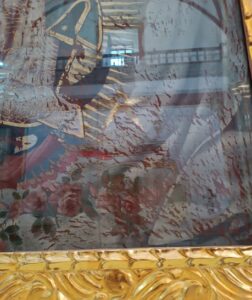
El deterioro ya se puede percibir a simple vista. Foto: Sofía Medeles.
“Sí se puede restaurar, si en algún momento hay una propuesta o proyecto para hacerlo. Por sus características y elementos, esta pintura probablemente viene del siglo XVIII, y aunque no hay mucha información sobre quien la trajo, de donde, y no hay firma de autor visible, es una de las joyas de la parroquia, por su calidad, y su antigüedad”, aseguró un historiador entrevistado.
Una adulta mayor de la población, identificada como Cuquis, comentó que alguna vez en misa un padre explicó su origen, del cual, solo pudo recordar el lugar donde se encontraba. “No recuerdo que padre la trajo, ni en qué año, solo sé que antes estaba en la Catedral de Guadalajara”, mencionó.
Blanca, otra mujer de Ajijic, compartió que la Virgen está desde que tiene memoria, teniendo su primer recuerdo vívido de una misa en el año 1986, cuando acompañó por primera vez a su mamá a misa en la delegación. “Siempre ha estado y desde que la vi por primera vez, me pareció imponente”.
Por su parte, Sara, una catequista del poblado, comentó que esa Virgen “ha estado presente desde siempre”, y como la incluían en la evangelización de los pequeños, señalando que cuando estaban frente a la imagen, les decían que cerraran los ojos, y ellos decían que la sentían como una mamá.
Hoy en día, la imagen continúa en el mismo lugar desde que llegó, tras un grueso cristal para preservarla, cuyo marco fue recientemente restaurado y recubierto con láminas de oro.
Fallece Frida, la perrita que rescató vidas en el terremoto del 2017 en México
Frida, la perra labrador falleció a los 13 años de edad. Foto: SEMAR.
Redacción.- Frida, la perrita rescatista de la Secretaría de Marina de México (SEMAR) quien participó en la localización de víctimas en el terremoto de septiembre de 2017, falleció el martes 15 de noviembre.
Frida, quien representó la esperanza de muchas personas en aquella catástrofe que asoló al país, participó en el rescate de 12 personas y 40 cuerpos de entre los escombros.
“Querida Frida, aunque tu partida nos duele, hoy la Familia Naval promete honrar tu memoria, actuando bajo el legado que nos enseñaste: «nobleza, lealtad y amor.» Gracias por servir a México, siempre vivirás en nuestros corazones”, lamentó la Secretaría de Marina en su cuenta de twitter.
La perra de raza labradora había cumplido 13 años, se jubiló desde el 2019 de la Armada de México, dedicando al menos nueve como rescatista al servicio de la Secretaría de Marina de la ciudad de México donde se le edificó una estatua en bronce en su honor.
El entrenamiento de la perra labrador inició desde su nacimiento en el 2019 en el cual Frida demostró aptitudes “muy destacadas” según los informes de la Marina. La primera misión de la can fue en el 2010, en Haití, después del terremoto que dañó la isla y varias personas desaparecidas, pero fue en el terremoto de México que se ganó el corazón de toda la nación donde participó en al menos 53 operativos.
Regresa la Virgen de Zapopan al Lago de Chapala
La Generala visitará Chapala para bendecir el lago el domingo 10 de julio. Foto: Archivo.
Redacción.- Bajo el lema “Custodia nuestra Vida entre tus brazos”, la Virgen de Zapopan visitará Chapala este domingo 10 de julio.
La visita 67 de la Generala al Lago de Chapala dará inicio a las 10:30 de la mañana con la recepción de la imagen en en la entrada del municipio por la carretera a Guadalajara, a la altura de la gasolinera.

Programa de la visita 67 de la Virgen de Zapopan a Chapala. Foto: Facebook.
De ahí, la Virgen será trasladada en un carro alegórico hasta el malecón, donde a las 11:30 se hará la bendición del lago en la espera de un buen temporal de lluvias, para posteriormente celebrar la Eucaristía en la parroquia de San Francisco de Asís, ceremonia que será presidida por el Cardenal Francisco Robles Ortega.
El lunes 11 de julio a las 09:30 a.m. la Virgen de Zapopan navegará por las aguas del Lago de Chapala para visitar la Isla de los Alacranes.
Luego del recorrido, la Generala regresará a la parroquia alrededor de las 12:00 del mediodía y las 04:00 de la tarde se celebrará la misa de despedida. Finalmente, a las 04:45 se cantará el Salve para iniciar su retorno a la Basílica de Zapopan.
Remembering Juan “Juanito” Olivares, prolific photographer of Ajijic
Juan Olivares «Juanito» – July 12, 1944 – May 28, 2022. Credit: Sofía Medeles.
Sofía Medeles (Ajijic).- One of Ajijic’s first and most prolific photographers, Juan «Juanito» Olivares, died last Saturday, May 28, 2022. He is survived by his wife Alicia Morales from Ajijic, and three children: Aquiles, Imelda, and Judith. He leaves behind a historical photo narrative covering almost his entire life
He was born on July 12, 1944 in Ajijic. His parents were Antonio Olivares and Romana Sánchez. In an interview from two years ago, Juanito said that he began his artistic career before his 20th birthday, with a plastic arts course. He used photography to improve his drawing technique, but soon photography became his main medium. Of his success, he explained, «when I was doing well, I would print up to 300 photos. When I started, the photos cost 50 centavos, and they went up to 75 centavos, one peso, two, three, and so on until they cost what they cost today.»
With his steadily increasing reputation, he became a fixture at town festivities, and important celebrations throughout the town. During this interview, he nostalgically mentioned how his work as a photographer was devalued over time, due to the advent of cell phones. Even so, he continued painting and making signs and small landscapes for businesses in town. Until the end of his days he remained in love with his little town of Ajijic, «the landscapes have changed a lot because of the development, but it is still beautiful every moment of the day.”
His collection included photos of old hammocks, fishermen, the lakeshore when it still had no pier, no boardwalk, and other landscapes of many iconic Ajijic sites. Some of what he photographed remains today, but much has disappeared; his body of work is art and history. He photographed traditions that are now almost extinct, such as the Day of the Cross, and the Day of the Altars of Sorrows.
Translated by Amy Esperanto
Ajijic’s friend, shaman, artist, teacher and tyrant, Katuza, is fondly remembered
Jesús María Higuera Hernández, born on March 1, 1951, passed away at the age of 71 on May 22, 2022. Photo: Facebook.
Sofía Medeles (Ajijic).- Beloved Ajijic personality Jesús María Higuera Hernández, known as Katuza, was recognized worldwide, not only for his artistic skill, but for being a spiritual master and revolutionary man every day of his life.
Born on March 1, 1951, he grew up in Ajijic in a family originally from the town. Later he would travel to Canada to start a restaurant. After a few years abroad, he decided to return to his hometown after succumbing to excessive drinking.
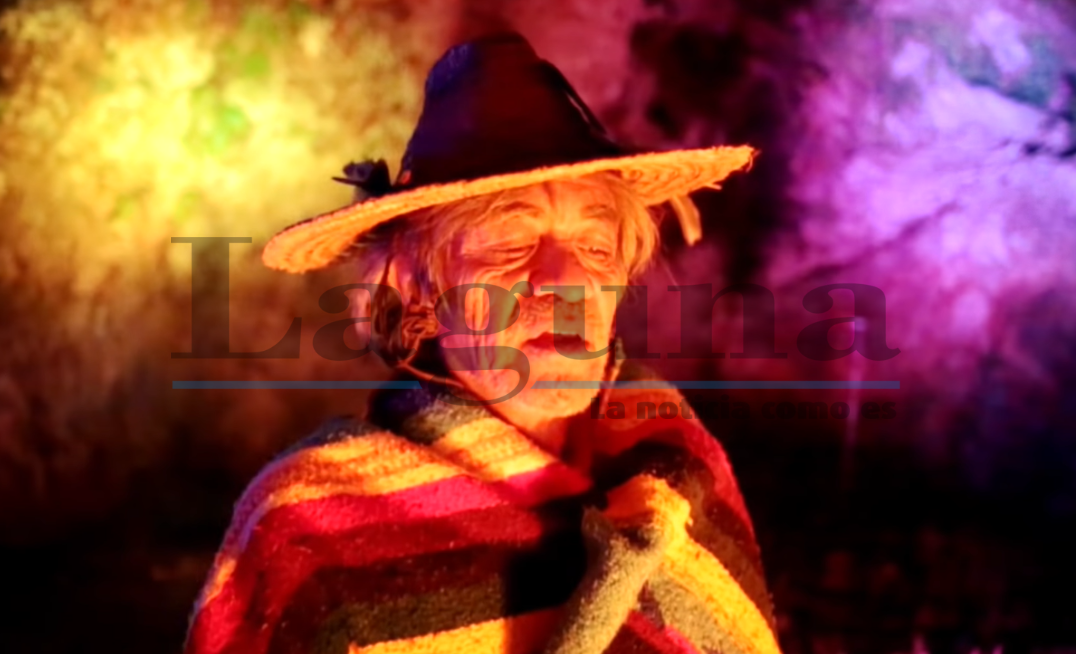
Katuza, pictured performing a ritual in Porter’s music video «Palapa». Photo: YouTube.
Upon his return, according to one of his closest friends, Daniel Palma, he continued excessive drinking, until he had a scare that made him forswear alcohol. After this, he became interested in the Huichol culture and their pilgrimage of «La Cruz». Joining them he learned about dance, healing, spiritual rituals and temazcal (sweat lodge), and received the title of marakame (one who merges art and culture) by the Wixárika community.
One of the skills for which he was most recognized was the temazcal, an ancestral healing ritual connected to the sweat lodge. One of his students, Luis Ríos, shared that with his apprentices, Katuza was always very firm, with a strong and sincere character, which surprised many, and alienated many others.
«He handled the traditional Mexican temazcal with burnt brick, mud and his own hands. He fought so much that he lost the sense of the temazcal. It moves with love and with love people are healed. The temazcal goes deeper, cleanses your being, your soul, and returns the essence of why we are alive, that’s how he taught me,» Luis said.
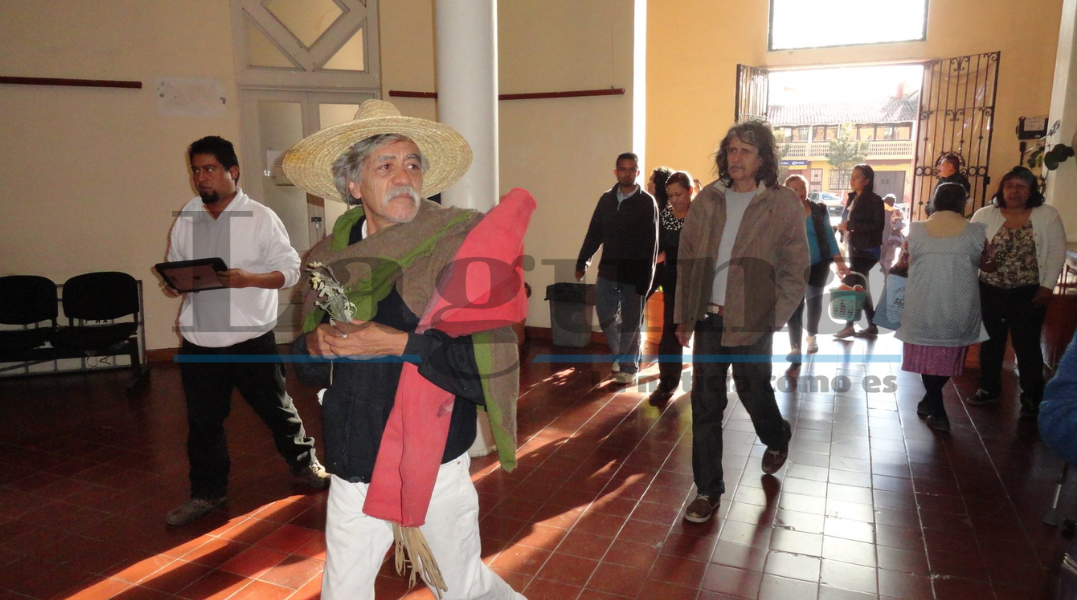
Katuza during a cleansing he performed at the Municipal Government Palace, in 2016. Photo: Facebook.
He performed dozens of temazcals not only in Chapala, but also throughout México and even Europe. National and international people became interested in him because of his rituals. Several of his acquaintances said that he was always traveling to continue learning and cultivating his skills, which is why he was portrayed in articles in media around the world, such as the New York Times.
«Once, some friends of mine were looking for this kind of healing. I took them to Katuza because he did what they were looking for. After they left, they told me that, in healing them, he was very specific with each one, ridding them of what ailed them, without having to mention it to them. They were very surprised, that’s why they recognized him as the medicine man,» Daniel Palma shared.
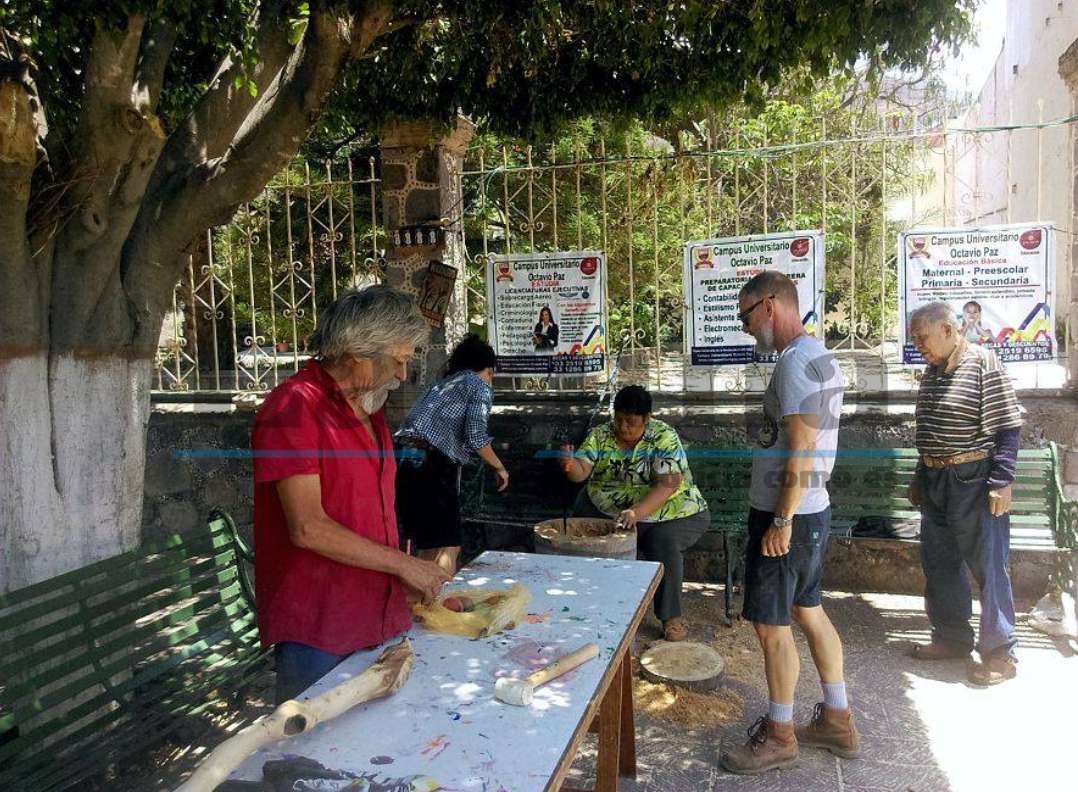
One of his wood and leather drum courses in the main square of Ajijic. Photo: Facebook.
As for his artistic side, his friend and colleague Daniel said that he handled wood and stone in a very rustic way, and his main creations portrayed lizards and iguanas.
Jesús María passed away last Sunday, May 22, at the age of 71. Many of his friends and acquaintances bid him farewell with a mass and small rituals.
He was a man who is a legend of the people Ajijic who is described with multiple titles: shaman, teacher, friend, artist, tyrant, and who inspired dozens of writings, songs, and videos that captured his eccentric life. One of those is a fragment of the song “Pájaro Rojo”, by Erick de Jesús Ocelotl:
Bajando luces de otros tiempos
Between the moon and the cold
Goes a marakame marking dreams
And the whispers of a child
[…]
Because you
You paint wings to my senses
And I
Smiling at your madness I tell you
[…]
Katuza is on an uncertain journey
Red bird red bird friend
Don’t forget what I say
Translated by Patrick O’Heffernan


“Katuza’, revolutionary and idealistic artist of Ajijic, passes away
Jesús María Higuera Hernández «Katuza» in his temazcal (sweat lodge). He passed away last Sunday at the age of 68. Photo: Facebook.
Sofía Medeles (Ajijic).- «Katuza», one of the most iconic characters of Ajijic passed away last Sunday, May 22 at the age of 68, leaving an artistic and spiritual legacy in Ajijic..
«Katuza» was the local name by which Jesús María Híguera Hernández was known since he was young. He was born on March 1, 1954 to a family from Ajijic. He studied in both Ajijic and Chapala, graduating as an accountant in the municipal capital, in the school known as «la academia de las monjas» (the nuns’ academy).
He never practiced his profession. He had a restaurant in Canada and later returned to México to begin his career as an artist, sculptor and shaman, being his marakame name – people who heal with traditional Huichol methods of the region, Cehuia Ilhuiac Marakame.
His relatives and acquaintances described him as a sincere man who said things as he thought them and disliked people who acted hypocritically, and as very spiritual and ahead of his time. «He spoke as he was told,» said one of his sisters.
He died last Sunday, May 22, of a heart attack. In the next edition of Semanario Laguna, we will publish his complete profile, his history, and his work in the town of Ajijic.
Translate by Patrick O’Heffernan
© 2016. Todos los derechos reservados. Semanario de la Ribera de Chapala


